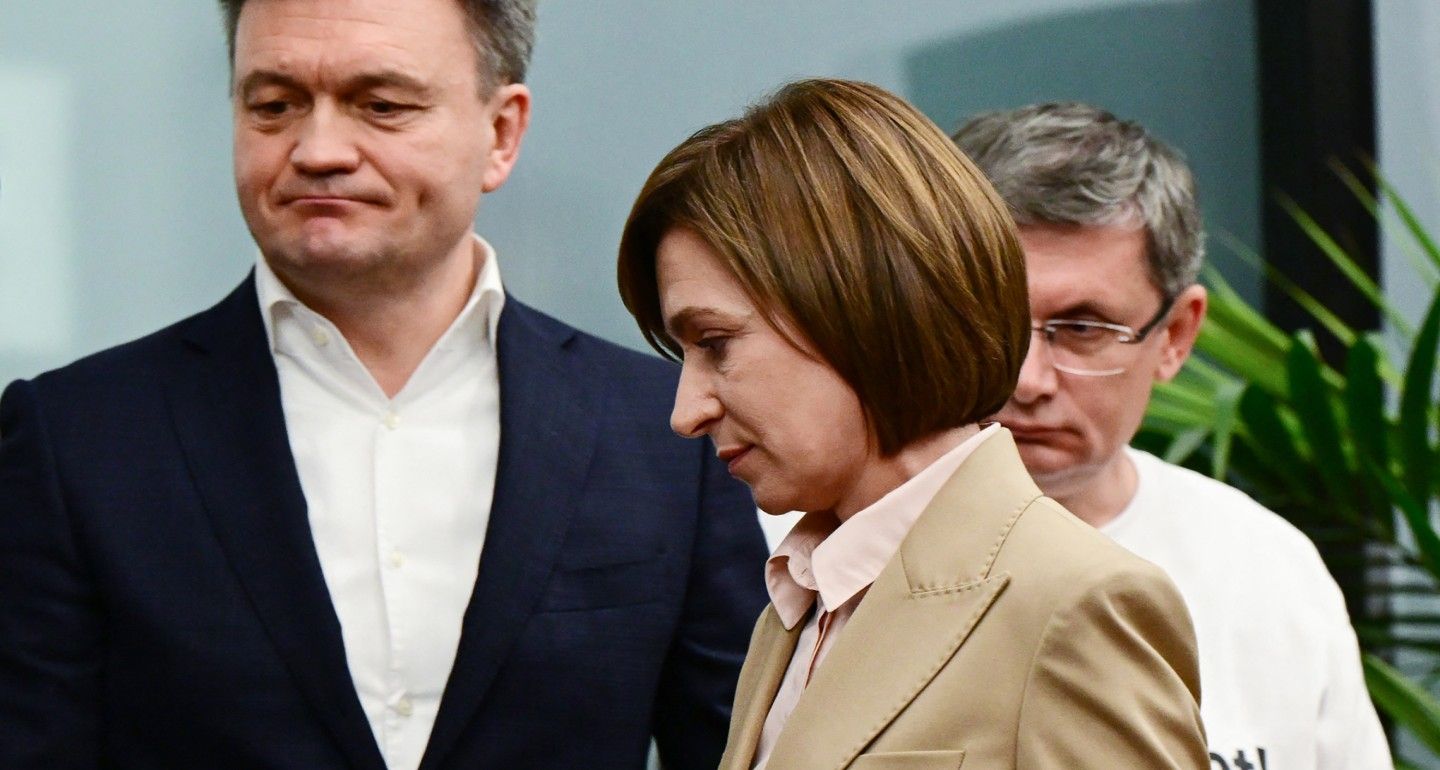Polling suggested that neither Moldova’s presidential election nor its referendum on joining the European Union would throw up anything unexpected. Pro-Europe President Maia Sandu was supposed to win in the first round, and the pro-EU side—triumph in the referendum. The results on October 20, however, were very different.
All through the election campaign, polling painted a more or less similar picture. Sandu was predicted to win 35 percent of the vote in an August poll that put her main opponent, Alexandr Stoianoglo, at just 9.9 percent. At the end of the campaign, in October, a survey suggested little had changed: Sandu was at 36.1 percent and Stoianoglo at 10.1 percent. It was the same for the EU referendum: support for including EU integration as a clause in Moldova’s constitution was 55.2 percent in August, 53.8 percent in September, and 55.1 percent in October. The “no” campaign was backed by, respectively, 36.1 percent, 35.0 percent, and 34.5 percent of voters.
Optimism in the pro-Sandu camp was bolstered on election day by a big turnout among the traditionally pro-EU Moldovan diaspora communities in the West. While there are hundreds of thousands of Moldovans in Russia, they had just two voting stations in Moscow, compared with sixty voting stations across Italy, sixteen in the United States, and seven in Canada.
After polls closed, however, dismay took hold in the pro-EU camp. While Sandu got more votes than predicted (42.25 percent), Stoianoglo ended up with more than double what polling had suggested (25.98 percent). Sandu’s failure to clear the 50 percent mark means she will now face Stoianoglo in a runoff on November 3.
The outcome of the referendum was a wafer-thin majority in favor of EU integration (until the votes came in from the Moldovan diaspora, the “no” campaign was actually leading). The final tally was 50.39 percent (750,238 votes) in favor and 49.61 percent (738,636 votes) against. In other words, the opinion polls were way off. It was a dramatic illustration of the divisions in Moldovan society—which will now be very difficult to ignore.
Nevertheless, while the results may seem shocking, they’re actually typical for Moldova—a country where voting has traditionally been riven by contradictions, and politics can be paradoxical.
Take the triumph of Moldova’s Communist Party in parliamentary elections in 2001. Before the vote, the Communists had promised closer ties with former Soviet nations, and to look at the possibility of joining a Union State with Russia and Belarus. However, less than two years after coming to power, Communist President Vladimir Voronin set up the National Commission for European Integration: a moment that is widely considered to mark the start of Moldova’s path toward EU integration. Of course, the Communists have always been seen as a pro-Russia party.
Similarly, when a pro-Europe government was elected in 2009—and achieved a visa-free deal and economic and political agreements with the EU—the number of Moldovans in favor of joining the EU actually declined. The low point came in 2015, when just 39.5 percent supported joining the EU (41.8 percent were opposed). Put simply, history shows that Moldovans project their dissatisfaction with a pro-EU government onto the EU itself.
So-called “pro-Russian” sentiment in Moldova is another complex phenomenon. The most prominent pro-Russian figure in contemporary Moldovan politics is exiled tycoon Ilan Shor, who was sentenced in absentia to fifteen years in jail by a Moldovan court for his role in a $1 billion theft. Shor, who now lives in Moscow, was accused—not without reason—of vote-buying in the recent elections. But why do tens of thousands of Moldovans accept 100 euros and cast their ballots as Shor tells them? The answer is poverty, lack of education, and disillusionment with politicians. And that means the fault lies not only with Shor, but also with generations of the Moldovan political elite.
At the same time, Moldovan politicians do not fit into black and white categories. Aside from anything else, the results of the recent vote have shown that the idea of Moldova as a pro-EU country with a popular, pro-Europe leader is far too simplistic.
That is nothing new. When Sandu came to power in 2020, she promised to focus on everyday problems like reducing poverty, battling corruption, and delivering social justice—and she avoided the divisive rhetoric of geopolitics. Indeed, Sandu’s policies were decidedly left-wing, helping her attract a broad swathe of voters. In a similar way, Stoianoglo, who will face Sandu in the November runoff, is not a typical pro-Russian politician. Although he was put forward by the Party of Socialists (which is close to Moscow), he himself supports Moldova’s EU integration, and has criticized the Russian Foreign Ministry for its imperfect understanding of Moldova.
Even in the recent referendum and presidential election, a comparison of voting patterns illustrates some of this complexity. On the one hand, residents of the breakaway state of Transnistria (which Chișinău has not controlled for over three decades) traveled into Moldova proper to vote for Sandu and EU integration. On the other, in Moldova’s Ungheni district, which lies on the border with Romania (and therefore the EU), as many as 56.75 percent voted “no” in the referendum (just 43.25 percent were in favor). There were similar results in other Moldovan districts bordering the EU, including the Cahul and Leova districts.
In Moldova, pro-Russian parties can put forward pro-EU candidates; pro-EU politicians can win the support of pro-Russian voters; and residents of Transnistria can declare their country to be Moldova. All this goes to show that Moldova is far from one-dimensional, black-and-white, or straightforward. Accordingly, the recent election results shouldn’t come as a shock. Moldova’s diversity needs to be acknowledged, both by local politicians and the country’s international partners.






